Dishing Out Deep Cleaning Advice For Your Dishwasher!
If you’re a follower on Instagram, then you’ve seen us show some pretty NASTY dishwasher filters. That’s because dishwashers are magnets for filth. And if yours hasn’t been cleaned in a while, now is the time to do something about it before it gets worse.
When we clean our clients’ homes, we can tell if a dishwasher is in need of a clean by the smell or the sight of the filter. Your dishes aren’t getting clean if you have a dirty machine, so it’s important to clean it regularly. Nobody likes cleaning dishes after they’ve been washed!
When you buy through our links, we may earn a small commission.
Cleaning Your Dishwasher’s Exterior
Depending on if you have a stainless steel or plastic machine, you’ll clean them differently.

Stainless Steel: One of our most commonly asked questions from clients is “how did you clean my stainless steel appliances?” The best answer: Weiman® Stainless Steel Cleaner always makes stainless steel look brand new.
Stainless steel tends to be a pain in the butt when it comes to keeping it free of drip marks and fingerprints. Start by wiping the door down with hot water and a small amount of Dawn® dish soap. Don’t forget the sides of the door, either!
Once it’s completely dry, grab the Weiman® Stainless steel spray (we prefer the spray bottle over the aerosol can). Before you spray, lay down some paper towels underneath the dishwasher. Weiman® can make your floor slippery so this will prevent you having to mop after. Spray down the door and grab some paper towels. Gently buff the product in with the direction of the stainless steel grain.
Let it sit for about 10 minutes for the product to fully soak in, then grab a clean paper towel and give it one more wipe. You’ll be amazed when you see that shine!
Plastic: Plastic machines are much easier to clean. Wet a microfiber cloth with hot water and a small amount of Dawn® dish soap. Wipe down the door and sides and let it dry. If you want that extra shine, follow up with some Windex® to polish.
Cabinets
If you notice splatters or hardened food on the sides of your cabinets around your dishwasher, give them a wipe as well. Just be gentle if it’s on painted surfaces to not leave scrub marks. Our Tide and hot water mix (recipe below) on a microfibre cloth will do the trick.
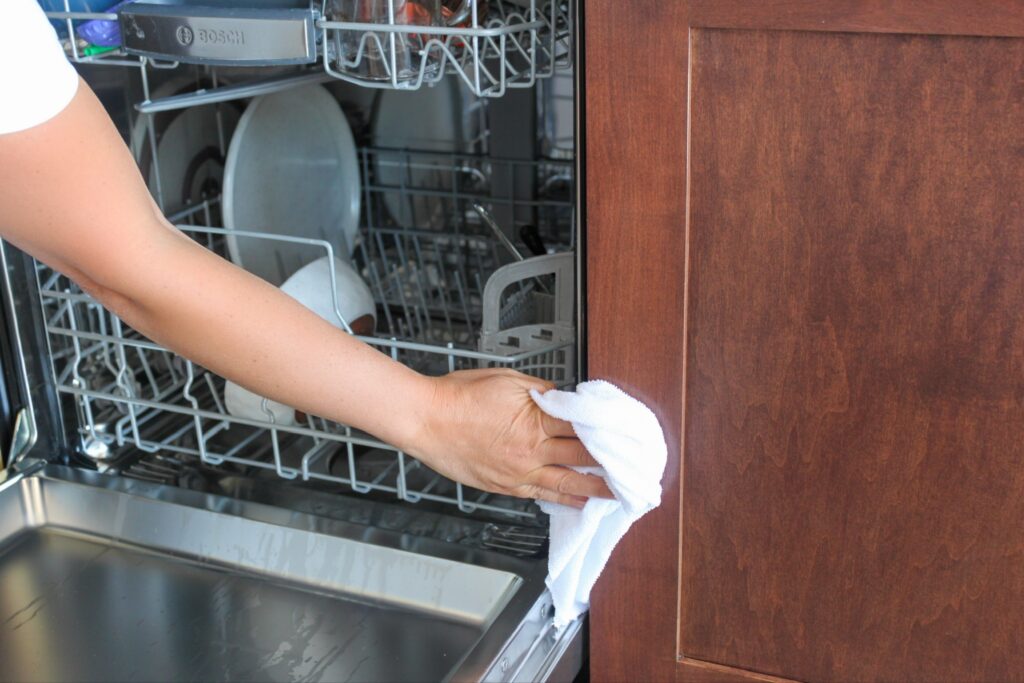

Cleaning Your Dishwasher’s Interior
First order of importance: DO NOT USE ANYTHING EXCEPT BLEACH TO CLEAN THE INSIDE OF YOUR DISHWASHER. Using any other cleaning products (including splashless bleach) may cause a sudsy nightmare! Move any area rugs out of the way, wear clothes that you don’t mind getting bleach stains on, and wear gloves to protect your hands.

Before you start, open your dishwasher and remove the cutlery tray and shelves.
Filter
This is where you find the real nasty stuff! Most dishwashers have a removable filter and they collect all of the food that doesn’t get rinsed off of your dishes. Most filters can be found inside at the bottom of the machine. Search for your model or check with your manufacturer if you can’t find yours. For most, all you have to do is twist the base of the filter and pull up to remove it, including the screen if there is one.
If you’ve never cleaned yours before, you may be a little grossed out. We’ve seen some pretty horrifying ones because many people don’t even know their dishwasher has a filter!
Once you’ve gotten your filter out, bring it over to your sink. Turn on your tap and GENTLY scrub off all of the stuck food with hot water. Grab some bleach in a bowl and give it another scrub before you give it a good rinse. (Be careful as you can break the filter if you scrub too hard.) Once you’re done, twist the screen and filter tightly back into place.
The Inside and Seal
If you open your dishwasher, you’ll see the black rubber seal that curves around the opening. This seals the door tightly when you close it so no water escapes when running a cycle. Seals can get coated with water deposits and bits of food, so it’s important to clean it too. Use bleach and water on a scrub brush. Be very gentle because they can damage easily. After you’ve scrubbed it, grab a damp microfiber cloth and wipe all the crud away.
Continue to clean the rest of the inside with straight bleach in a small bowl using a soft cloth or scrub brush. Get in all the nooks and crannies, particularly around the edges and by the door hinges. (Pro Tip: Slide a damp cloth around a butter knife to get into any tight spaces that your brush is missing.) Bleach should help to remove any hard water deposits. Then use a damp cloth to wipe everything down.

Sprayer Arms
If your sprayer arms are clogged, you can also clean them. On most models, you can lift and remove them from the machine; there may be a knob you need to turn to release it. Once you have the arm removed from your machine, you can pull out any stuck food with tweezers or a pin. If they are really clogged you can let them soak in hot water and vinegar and use a scrub brush. Be careful to not pull apart the arms, they often can’t go back together.
Pro tip: You can replace your filter, rubber seal and sprayer arms if needed. Just search your make and model to find where to purchase a new one.
Wash Cycle
Return your cutlery basket and shelves back into the dishwasher. Grab some trusty bleach and pour 1/3 cup straight into the bottom of your dishwasher. Close the door and run a long, hot cycle. This will kill any bacteria, cut any unpleasant scents, clean the racks and leave the inside sparkling.
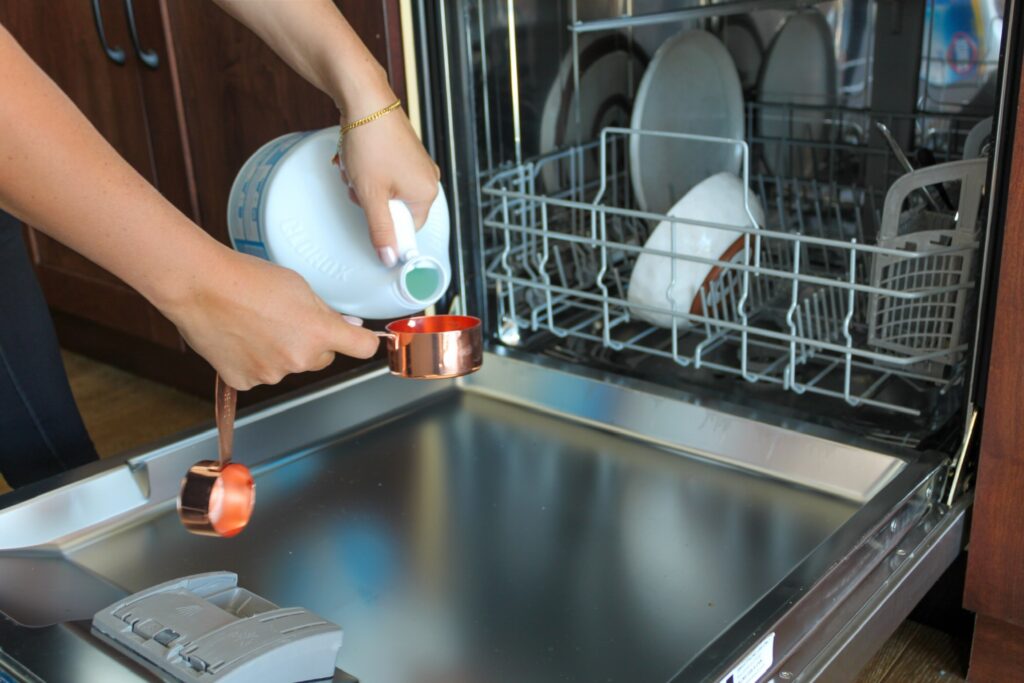
Heating Element
Some dishwashers have a visible heating element inside. If yours has one, there’s a chance it may be coated in hard water. Grab some trusty vinegar on a microfibre cloth and wrap it around the element so it can lift the hard water (ensure element has cooled before doing so). Let it sit as long as it needs and then lift and wipe up all of the crud. Run a cycle after with JUST WATER. Remember, we don’t want to mix any chemicals so you’ll do this after your bleach cycle.
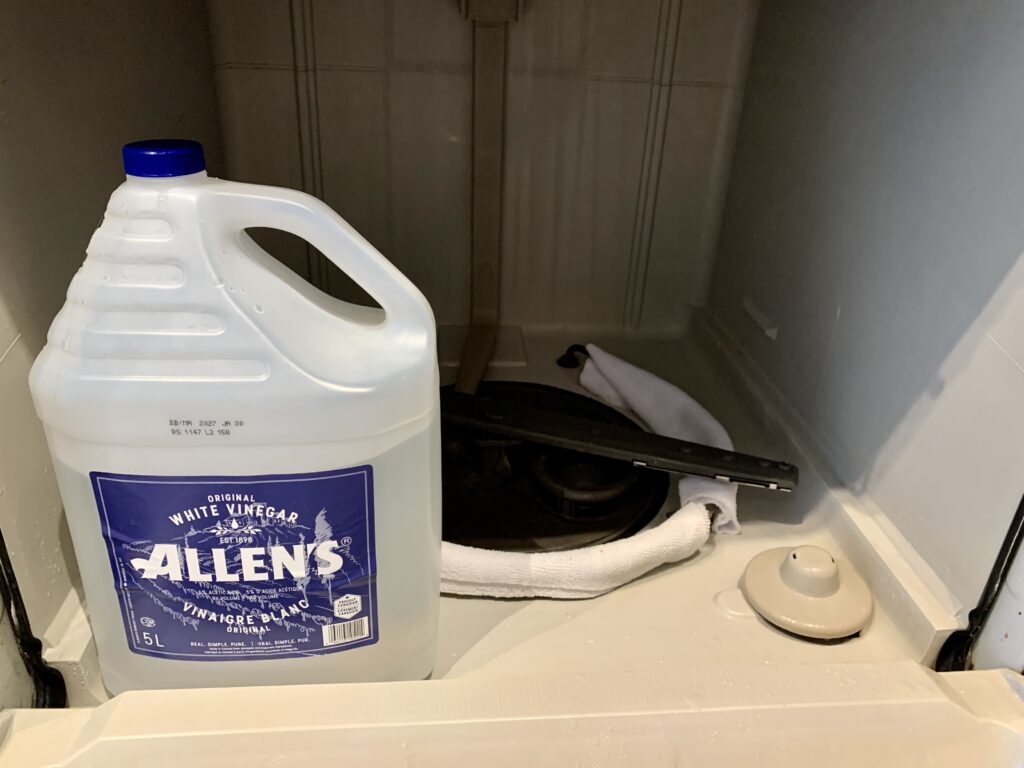
Cleaning your dishwasher is SO important and should be done regularly. This is the kind of thing that makes us question why this stuff isn’t taught in school! Check your filter once a week and rinse it in the sink to keep up with the cleanliness of your machine. Always refer to your model’s user manual for specific machine instructions and troubleshooting.
For a list of our favorite products, click here.
- Georgia @GoCleanCo




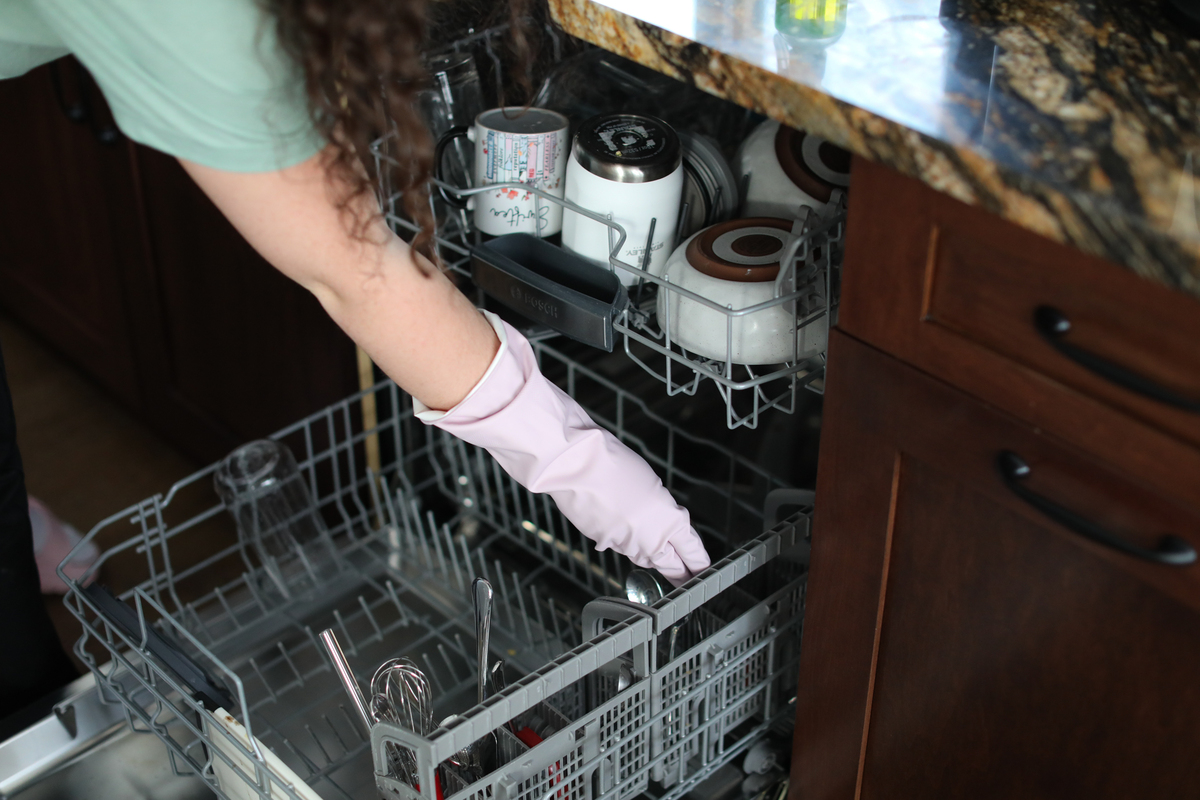
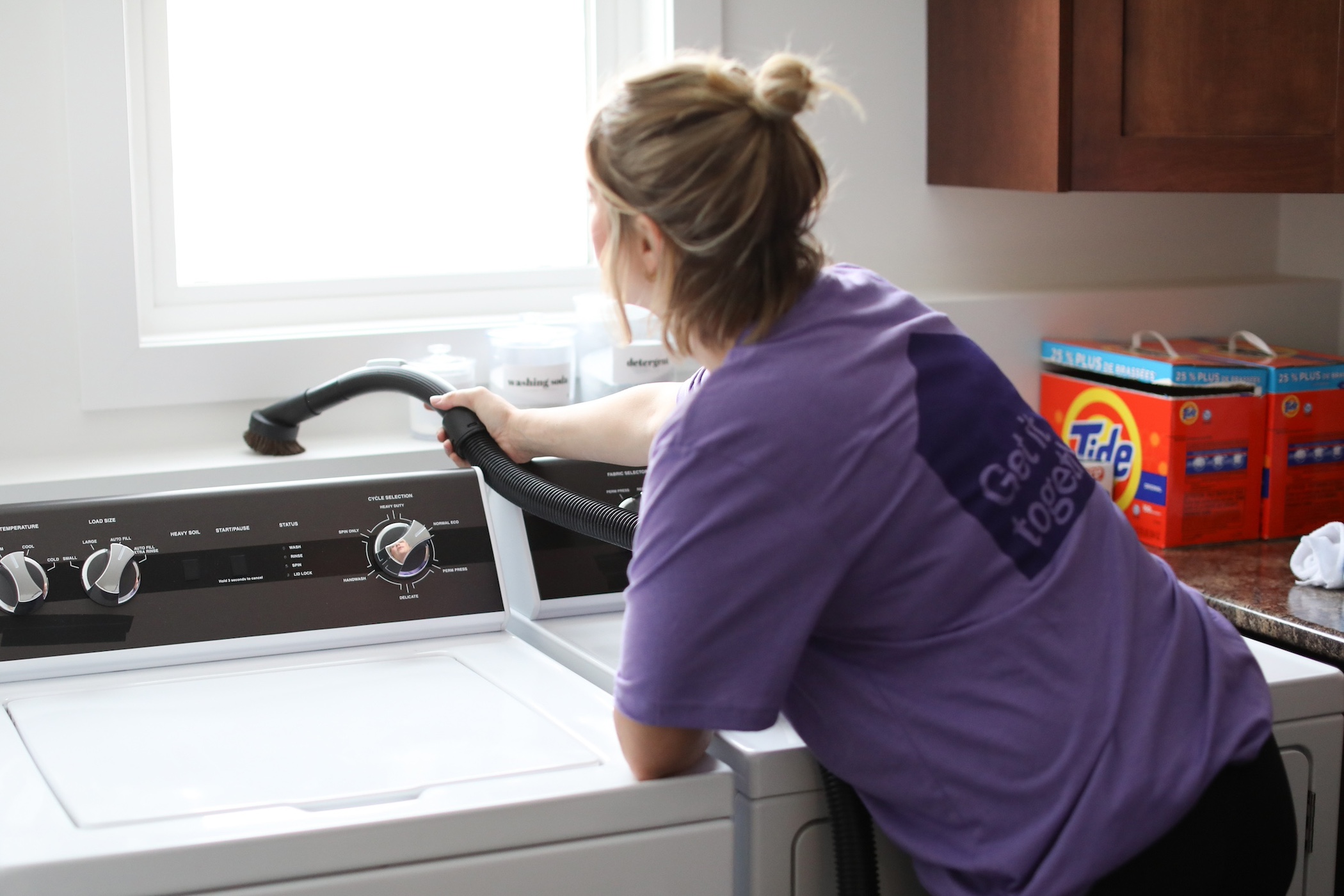
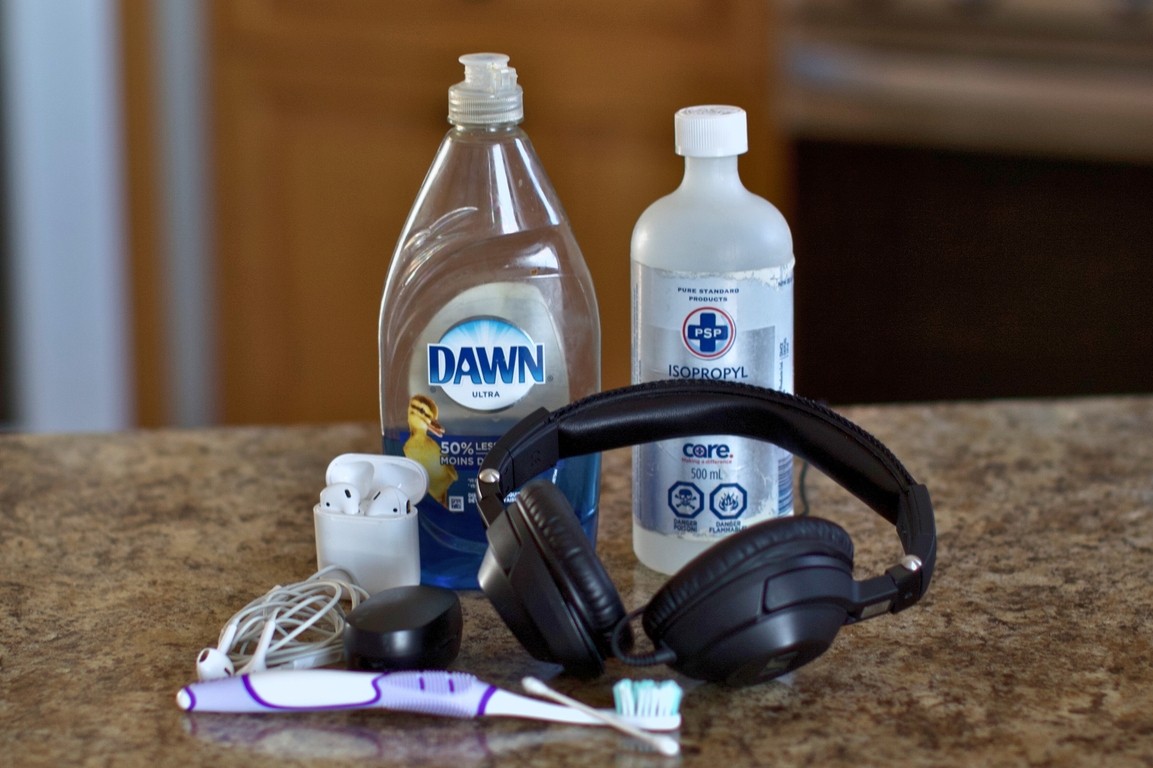
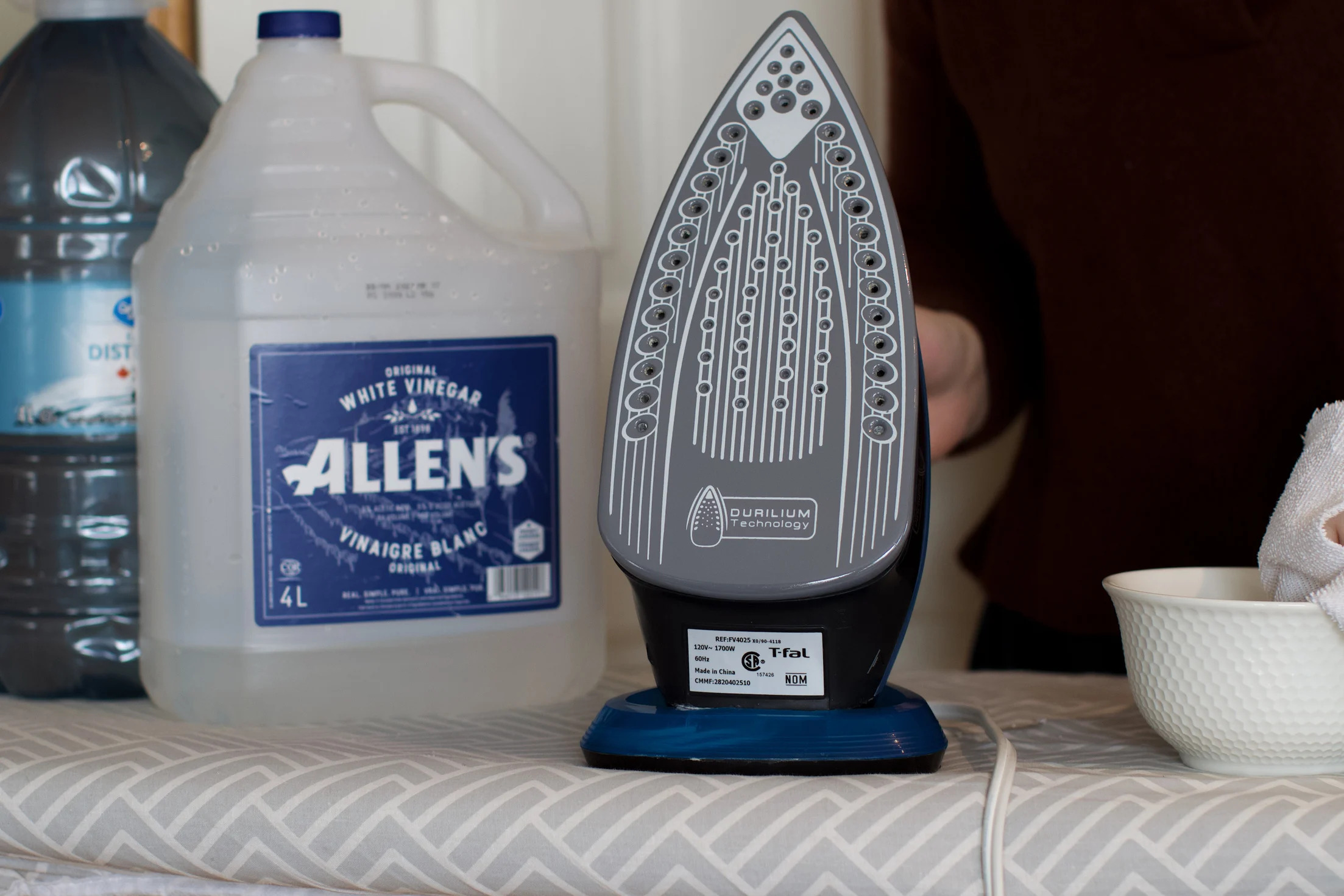

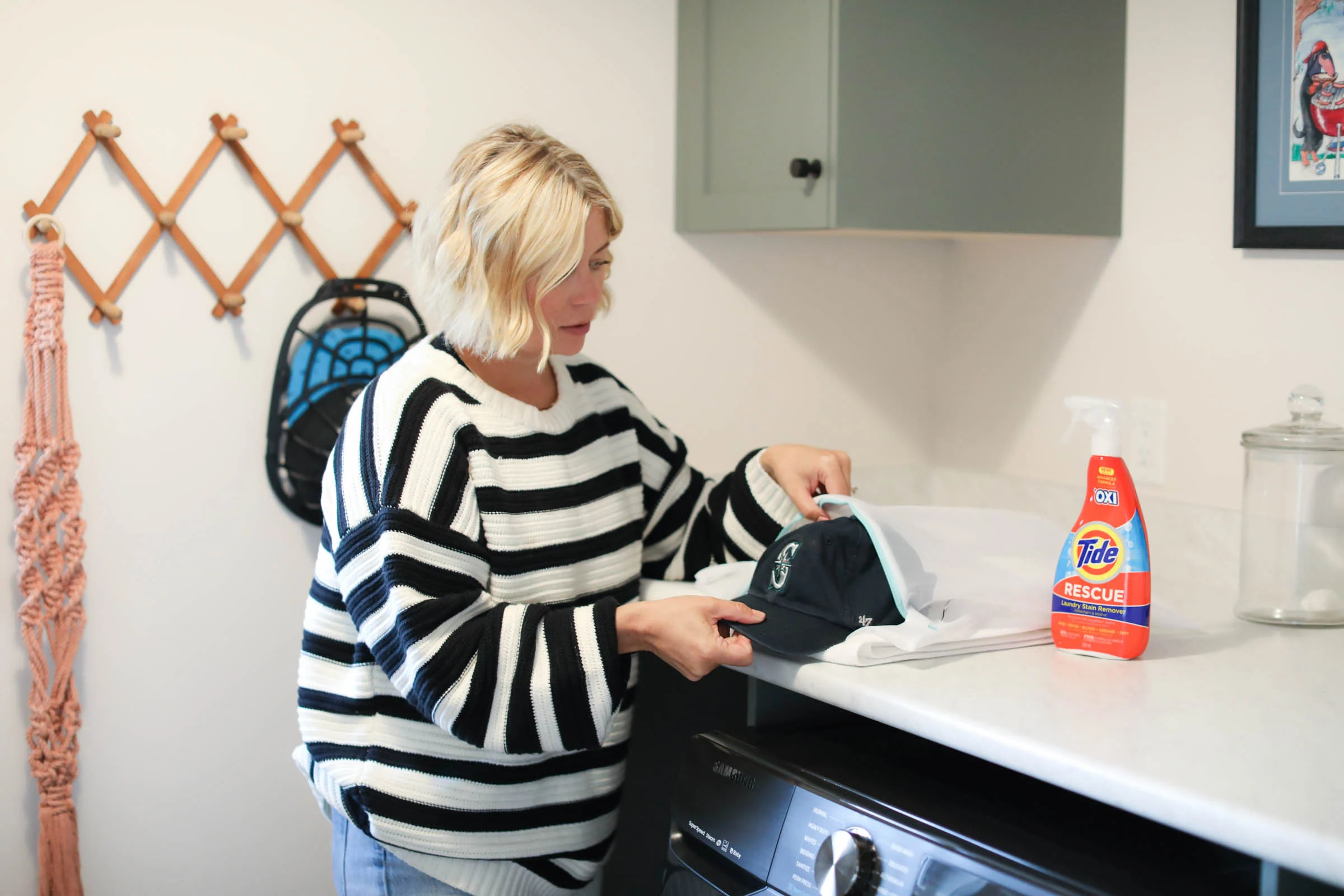

We're big on Instagram.
Follow @GoCleanCo for seriously satisfying videos and top-secret tips. Don’t be shy, come say hi.